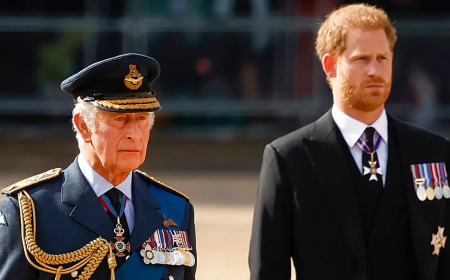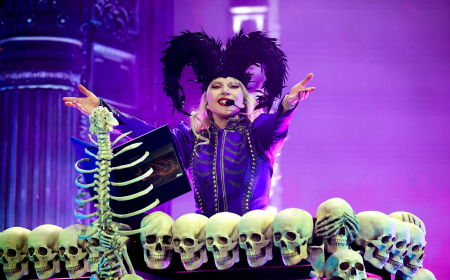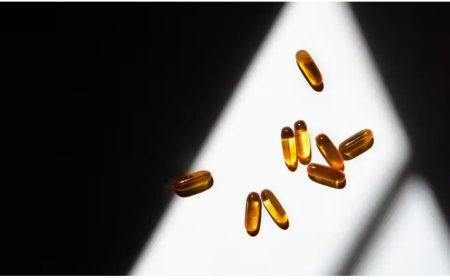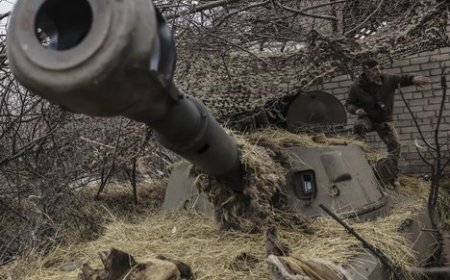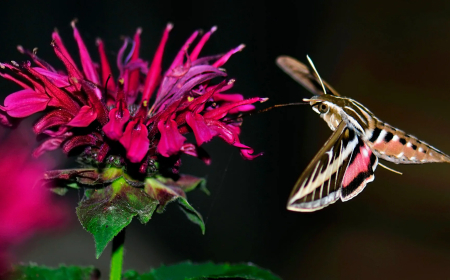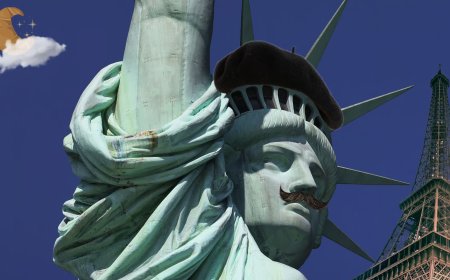Where bees won't go: How flowers rely on cockroaches, bats and moths
New research is showing just how much plants and crops rely on a host of darkness-dwelling creepy crawlies.

Think pollination, and you will likely picture a butterfly or bee flitting between flowers. But while these are indeed important pollinators, both the natural world and our food supplies rely on a host of other creatures, some of them decidedly less appealing.
Most of the world's 350,000 species of flowering plants rely on animal pollinators for reproduction. Pollinators and their importance for ecosystems are increasingly in the spotlight in recent years due to the dramatic decline in their numbers. Birds, bats, bees, bumblebees and butterflies have all been affected, with some populations shrinking by 80% or more. The causes include habitat loss, pesticides and climate change.
And recent research has also shown that pollinator diversity is just as vital for ecosystems and cultivated plants as the sheer numbers of pollinators, and found that this diversity is on the decline for similar reasons.
Scientists estimate that 3-5% of fruit, vegetable and nut production is lost globally as a result of inadequate pollination, affecting the availability of healthy food and threatening human health.
From cockroaches and beetles to the tiny "bees of the seas", here are some of the most unexpected, and occasionally disconcerting, pollinators the world continues to rely on – even if we don't always see them.
Cockroaches
Cockroaches are, in the words of one study, "among Earth's most despised creatures". But recent research suggests they play a beneficial and long overlooked role as plant pollinators – especially in the darker areas of forest often avoided by the world's more beloved bees and butterflies.
"Traditionally, pollination has been associated with bees, flies, moths and butterflies," says Kenji Suetsugu, a professor of biology at Kobe University in Japan. "However, emerging studies reveal that unexpected visitors such as cockroaches can play significant roles under certain conditions."
These "alternative pollinators", he adds, are often particularly important in environments where conventional pollinators are scarce, such as "in dense, shaded understories where light is limited and typical pollinators are infrequent".
In fact, a growing body of research suggests that cockroaches act as pollinators in a rich and varied range of ecosystems – a role that previously went mostly unnoticed by researchers, since the creatures are nocturnal and less obvious in their interactions with plants than bees. In recent years, cockroach pollination has been reported for plant species such as Clusia blattophila, which grows on rocky outcrops in French Guiana, and the rare and endangered Vincetoxicum hainanense in China, amongst others.
Suetsugu has studied the role of cockroaches in pollination in dense, evergreen forests on Yakushima Island, a lush, subtropical island off Japan. He was specifically interested in cockroach-assisted pollination of Balanophora tobiracola, a mushroom-shaped parasitic plant.
Since cockroaches are elusive and nocturnal, he used several tricks to better understand their interactions with this plant. For example, he set up a waterproof digital camera in front of one flowering plant which took photos of it in 50-second intervals from dusk till dawn for around three weeks. The resulting photographs – more than 34,000 shots – showed cockroaches visiting the flower at night. Suetsugu also captured cockroaches after they'd visited the plant to identify and count the pollen grains on their bodies.
To investigate how a single cockroach visit affected the plant's chance of setting fruit, he enclosed five of the plant's flowers with a fine mesh and opened it only for one visit by the Margattea satsumana cockroach (the most frequent cockroach visitor for this plant), then closed it again. He compared this with other treatments of the plant, such as covering the flowers with mesh for the entire flowering period, to exclude all pollinators.
The study, published in 2025, provides "the first direct evidence of effective cockroach pollination" in this type of plant, says Suetsugu. "In the case of a single visit [by a cockroach], nearly 40% of flowers developed pollen tubes, a strong indicator of successful pollination."
Beetles
As soon as the first ever flowers unfurled from their buds in the early Cretaceous period, they were visited by pollinators. But those first soft landings on their petals weren't by bees or butterflies – instead, it's thought that the pioneers of pollination may have had six scuttling legs and tough, shiny shells. They were beetles.
Beetles remain important pollinators to this day, often visiting flowers with the most seemingly unpromising allure – little nectar, greenish flowers, and an overpowering, possibly putrid smell, a set of traits known as "beetle pollination syndrome".
Despite millions of years of evolution, beetles remain among the most frequent pollinators of primitive flowers which emerged among the dinosaurs, such as magnolias. And unlike the more well-known modern pollinators, many beetles like to operate at night, flying or crawling towards the warmth and delectable scent emitted by certain beetle-specialised flowers, such as lowiaceae orchids in Borneo which smell strongly of faeces – a favourite of dung beetles.
Moths
As they hover above wild tobacco flowers, hawkmoths unfurl their 8cm (3in)-long proboscis to drink up its nectar – among their favourite meals. As they do this, grains of pollen are also pulled – as if by magic – across air gaps of several millimetres or even centimetres.
This happens because, incredibly, moths collect so much static electricity whilst in flight that pollen is pulled through the air towards them. The fact that they don't need to touch flowers in order to pollinate them makes them very good pollinators.
The majority of pollination research has tended to focus on day-flying insects, but researchers are now probing what is happening at night.
In 2023, researchers from the University of Sussex, UK, discovered moths may even be more efficient pollinators than bees. The team studied both daytime and nocturnal pollinator visits to bramble plants, a widespread species across Europe which is important to pollinators for its pollen and nectar. While the study found that 83% of all visits were made in the day, and just 17% made under cover of darkness (almost exclusively by moths), it also found the moths were able to pollinate the flowers more quickly than their daytime counterparts.
The authors say nocturnal pollination is understudied. As moths have been shown to transport pollen from wide variety of plant species, further research is needed to fully appreciate the role they and other nocturnal insects play in pollinating, they say.
Another recent study from the University of Sheffield, UK, found moths account for a third of all urban pollination. However, a lack of native plant species and diversity of plant life in cities, coupled with scent-stifling air pollution, is still leaving moths struggling to find their next meal. Now, experts are warning of an "alarming" global decline in moth abundance and diversity.
There are ways we can help, though, such as planting white flowers, leaving patches of scrub, rough grass and brambles to grow and turning off lights at night. Night-time pollinators such as moths, it turns out, need protecting just as much as bees.
Bats
Bats are another oft-overlooked furry night-time pollinator. While most bats eat mainly insects, at least 500 plant species in the tropics and subtropics are pollinated largely by nectar-feeding bats. Scientists say that bat pollination (chiropterophily) could have advantages: their large size means they can transfer a lot of pollen at once, and they fly long distances compared with many other pollinators. However, the large size of bats can also make pollination by them energetically expensive for plants.
One example is the endangered greater long-eared bat, native to the south-western US and Mexico. It feeds mainly on the pollen and nectar of agave (used to make mezcal and tequila) and various cacti, hovering above the plants just like a hummingbird to feed. Along with the lesser long-nosed bat, it is the main pollinator of agave.
Like agave, the pale flowers these bats feed on are often long and bell-shaped, and many bats have evolved ways to reach the nectar at the bottom of them. An extreme example is the tube-lipped nectar bat, found in the cloud forests of Ecuador. The size of a mouse, it has a tongue more than one and a half times its body length – the longest tongue-to-body ratio of any mammal and is the sole pollinator of a plant with corolla tubes of matching length. While not in use, it stows this huge tongue down in its rib cage.
(Source:BBC)






